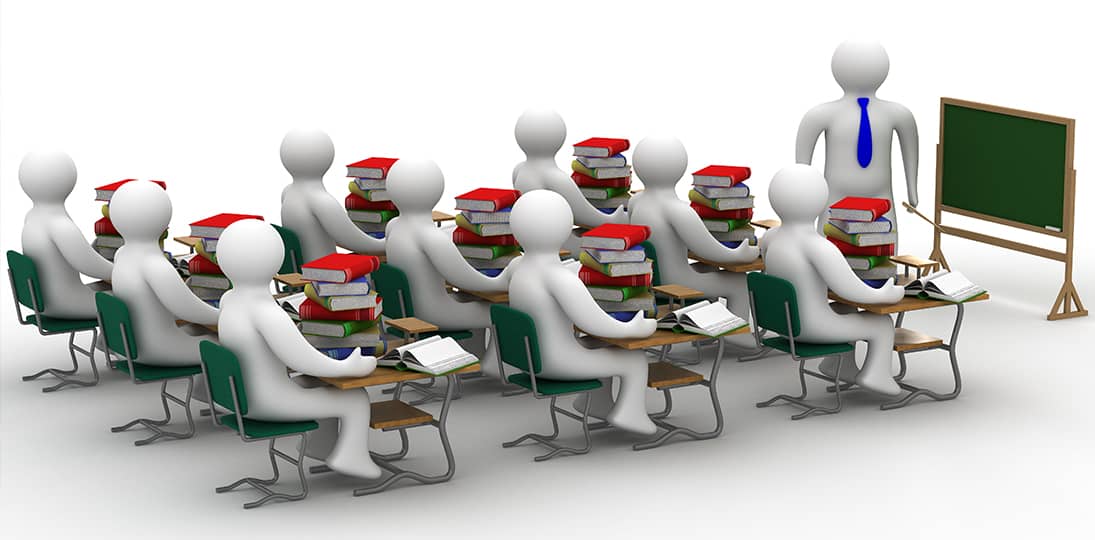Today’s world is connected world, with information and technology in more and more aspects of our lives. When educating young people to take an active, productive part in the information age, technology is a given. They’re already exposed to and using it at home, so they should also have it at school. Your school digital signage is an easy and effective way to get tech into the environment and into their minds. Enhancing a curriculum with technology is nothing new, but including digital signage in your mix can help you address specific challenges that today’s educators face.
Educational Technology and Instructional Scaffolding
You can use your digital signage to extend learning beyond the classroom, into any space where you mount a display. Introduce new topics that are coming up in class using a series of messages or videos on your digital signs. You can present key terms, pose questions and use graphics to jump-start learning and prepare students for in-depth lessons. You can also reinforce past lessons with additional messages.
Say that students in 4th grade are studying the American Civil War. Display some of the highlights from the curriculum on screens around the school, in the cafeteria, etc. This reinforces what the fourth graders are learning, reminds students in higher grades of lessons they’ve had in the past, and telegraphs what’s coming to students in lower grades (maybe giving self-starters a chance to get an early lead on the material). This is a good use of educational technology that can reach out and positively affect all your students at once.
Informal Learning
Informal, or Non-Formal, Learning is how most adults learn things in their day-to-day lives. Learning is an ongoing phenomenon that happens everywhere we are. Your digital displays can act almost like another teacher on staff, letting you reinforce what’s learned in the classroom, introduce upcoming or new topics and create a pervasive educational atmosphere. The difference is that your digital signage messages are not necessarily outcome- or teacher-focused. You can use them to promote self-directed learning as well.
Experiential Learning
Digital signage doesn’t have to be merely passive – it can also be used to get your students actively involved in learning and projects. It’s often a good idea to include some kind of call to action in your messages, but this can extend to hands-on work in and outside of the classroom. You can get them to create digital presentations to be displays on your screens – they create messages around a theme, advertise events, share and recognize one another’s work with the whole school, and more.
Learning Styles
Though there’s debate on the subject of learning styles, teachers know that some students respond well to certain methods and stimuli, while other students need something different to engage them. Many people are visual, and digital signage is certainly that. Screens and images draw attention and movement captures the eye. Data visualizations allow learners to comprehend larger amounts of information quickly, reinforcing their classroom learning.
Digital Literacy
Kids today need to learn the ins and outs of digital literacy – how to interact with information and people online. This includes the knowledge, skills and behaviors needed to interact with online information using critical thinking skills, understanding of copyright and ethical standards, as well as using the internet in a safe and responsible way. Digital signage can certainly be used for microlearning on these topics year-round, with small snippets of advice, quiz questions students can answer by going to a dedicated webpage (via a QR tag or short URL). Even if there’s no time in the classroom to discuss these topics, your digital signage can be leveraged to get the job done.
Cooperative Learning
Have groups of students work together to create daily announcements or lunch menus. They can also manage and schedule their announcements in your digital signage software, giving them valuable experience with modern technology and a chance to share their interests and knowledge, while also learning teamwork.
Project-Based Learning
Extend some of the above concepts for long-term projects. Individuals and teams can develop digital signage campaigns that can then be shared throughout the school over a period of weeks or months. Whether it’s algebra or Shakespeare, students can get creative and share the results of their hard work and research.
Digital Storytelling
Some students respond to more creative projects. Digital signage can be used to tell educational stories in exciting ways. Show student-created video clips, timelines or cartoon panels to
advertise and reward their efforts. When students have worked hard on something and made it their own, and then others see it and react to it, their confidence is boosted as they see that what they do has real-world applications and consequences, and they get compliments on their work.
Gamification
Just about anything can be turned into a game or contest. This motivates students while making work seem like play. Keep up the momentum with up-to-date progress and standings, and
recognize game winners on your big screens. Hand out actual prizes they can all share (a pizza party, or a relaxation of dress code, or a chance to leave early on Friday) that will keep them get engaged and want to continue participating.
Your digital signage is one of the most powerful technology tools you have at your school. Use it to create a varied, immersive learning environment for your students, while encouraging them to always try their best, work together, understand the word around them, and have fun while working.
